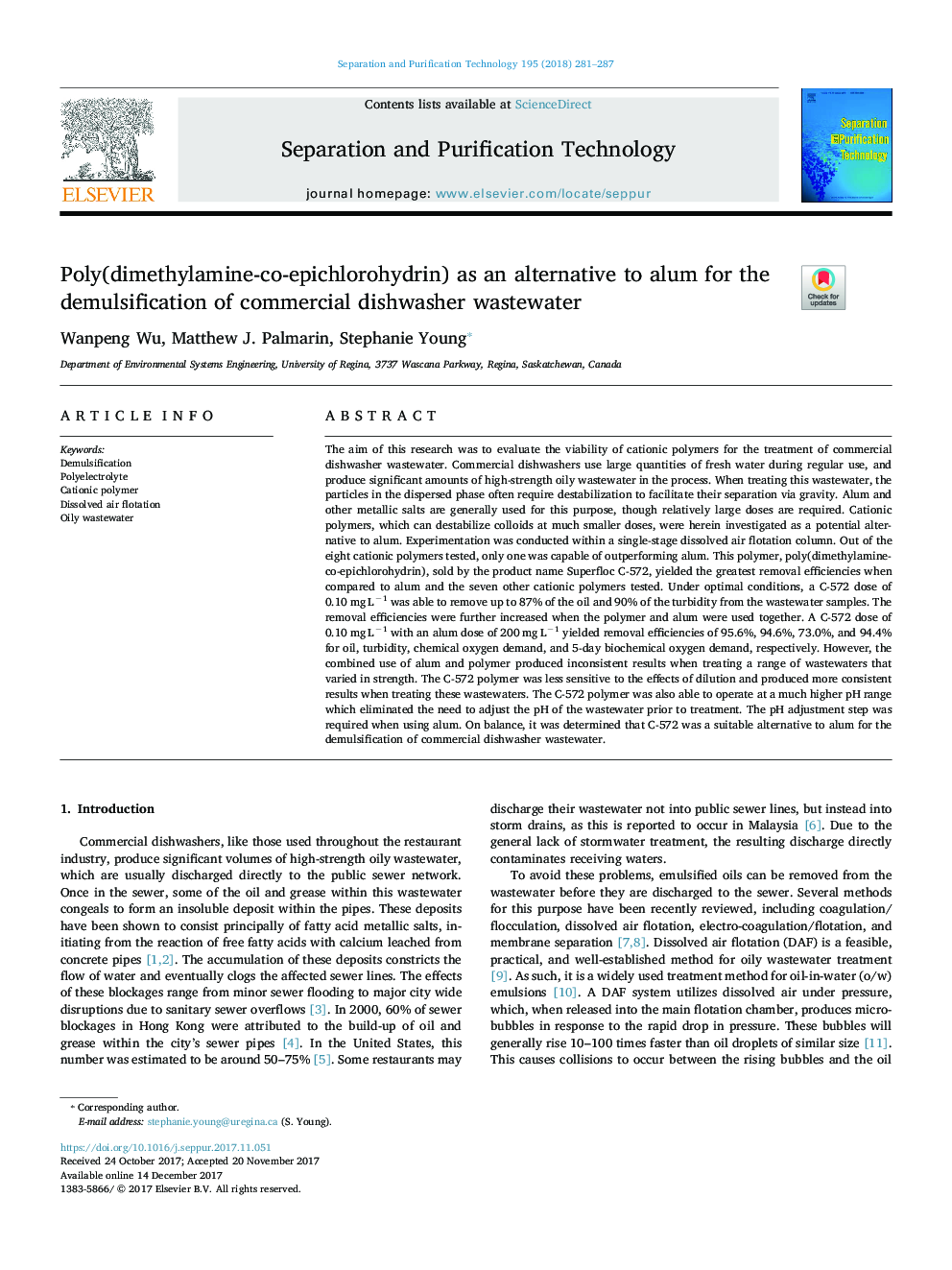| کد مقاله | کد نشریه | سال انتشار | مقاله انگلیسی | نسخه تمام متن |
|---|---|---|---|---|
| 7044027 | 1456925 | 2018 | 7 صفحه PDF | دانلود رایگان |
عنوان انگلیسی مقاله ISI
Poly(dimethylamine-co-epichlorohydrin) as an alternative to alum for the demulsification of commercial dishwasher wastewater
ترجمه فارسی عنوان
پلی (دی متیل آمین-کپی-اپی کلرو هیدرین) به عنوان یک جایگزین برای آلوم برای انحلال فاضلاب تجاری ظرفشویی
دانلود مقاله + سفارش ترجمه
دانلود مقاله ISI انگلیسی
رایگان برای ایرانیان
کلمات کلیدی
انحلال پلی الکترولیت، پلیمری کاتیونی شناور شدن هوا، فاضلاب روغنی،
موضوعات مرتبط
مهندسی و علوم پایه
مهندسی شیمی
تصفیه و جداسازی
چکیده انگلیسی
The aim of this research was to evaluate the viability of cationic polymers for the treatment of commercial dishwasher wastewater. Commercial dishwashers use large quantities of fresh water during regular use, and produce significant amounts of high-strength oily wastewater in the process. When treating this wastewater, the particles in the dispersed phase often require destabilization to facilitate their separation via gravity. Alum and other metallic salts are generally used for this purpose, though relatively large doses are required. Cationic polymers, which can destabilize colloids at much smaller doses, were herein investigated as a potential alternative to alum. Experimentation was conducted within a single-stage dissolved air flotation column. Out of the eight cationic polymers tested, only one was capable of outperforming alum. This polymer, poly(dimethylamine-co-epichlorohydrin), sold by the product name Superfloc C-572, yielded the greatest removal efficiencies when compared to alum and the seven other cationic polymers tested. Under optimal conditions, a C-572 dose of 0.10â¯mgâ¯Lâ1 was able to remove up to 87% of the oil and 90% of the turbidity from the wastewater samples. The removal efficiencies were further increased when the polymer and alum were used together. A C-572 dose of 0.10â¯mgâ¯Lâ1 with an alum dose of 200â¯mgâ¯Lâ1 yielded removal efficiencies of 95.6%, 94.6%, 73.0%, and 94.4% for oil, turbidity, chemical oxygen demand, and 5-day biochemical oxygen demand, respectively. However, the combined use of alum and polymer produced inconsistent results when treating a range of wastewaters that varied in strength. The C-572 polymer was less sensitive to the effects of dilution and produced more consistent results when treating these wastewaters. The C-572 polymer was also able to operate at a much higher pH range which eliminated the need to adjust the pH of the wastewater prior to treatment. The pH adjustment step was required when using alum. On balance, it was determined that C-572 was a suitable alternative to alum for the demulsification of commercial dishwasher wastewater.
ناشر
Database: Elsevier - ScienceDirect (ساینس دایرکت)
Journal: Separation and Purification Technology - Volume 195, 29 April 2018, Pages 281-287
Journal: Separation and Purification Technology - Volume 195, 29 April 2018, Pages 281-287
نویسندگان
Wanpeng Wu, Matthew J. Palmarin, Stephanie Young,
